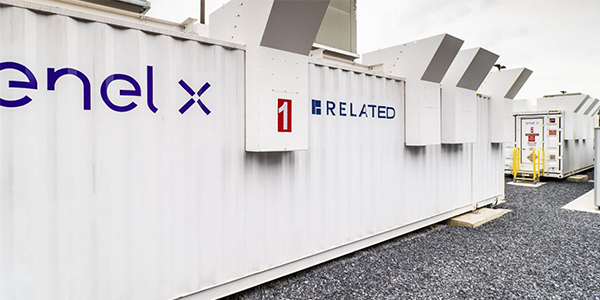An agricultural hub of about 8,000 in the northeast corner of Iowa seems an unlikely choice for a state-of-the-art battery storage project, but the Department of Energy thinks it could become a template for other American towns.
The DOE is chipping in $250,000 on a $2.5 million, 2.5-MW battery storage pilot project in Decorah, Iowa, to increase the city’s capacity for rooftop solar. Alliant Energy will build the project; Sandia National Laboratories will provide technical support and collect data. The Iowa Economic Development Authority (IEDA) is also contributing a $200,000 grant.
Those groups, and others, will analyze the storage project’s operations, looking for a cost-effective model that can be used elsewhere on the grid.
Decorah Mayor Lorraine Borowski said the Decorah grid currently doesn’t have the capacity to accommodate future customer-owned solar projects. She said the town expects the battery will yield savings on avoided distribution system investments.
Alliant hopes to have the Enel X battery in service by the end of year, though COVID-19 has slowed development.
“This grid has become a lot more complex in the last couple of years,” DOE Director of Energy Storage Research Imre Gyuk said during a July 30 DOE webinar on the project. “We now have an appreciable amount of renewable energy … and for good reason because we need to worry about the world warming up and pollution … You can’t just put photovoltaics or other renewables on the grid without expecting disturbances.”
Gyuk said electric vehicles and on-site generation is also complicating once cut-and-dried load patterns.
Decorah’s “typical small Midwestern town” façade belies Iowa’s status as a storage trailblazer, Gyuk said. In 2006, he noted, Iowa Associated Municipal Utilities and the Iowa Stored Energy Project tried to install a 200-MW compressed air energy storage project in an aquifer before project leads discovered the sandstone terrain was unsuitable.
“It’s time for Iowa to get back in the game,” Gyuk said. But he said Iowa and other states still need appropriate regulatory frameworks to develop a grid containing high renewable penetration.
“What we look for is strong local support. You need a local champion,” Gyuk said of finding the right location in small-town Iowa. “You need people who are committed and will stick with the thing to make it work.”
The City of Decorah is providing leased space for the project in a public park.
Borowski said Decorah’s residents are often out-of-state imports and like-minded about a renewable-dominant future. And Decorah’s hard-rock topography of bluffs and hills makes line-building a challenge, Borowski said. She called the pilot program a “natural fit.”
Alliant Energy Solutions Engineer Sarah Martz said the Norwegian cultural hotspot famous for its eagle-hatching camera is on par to reach its distributed generation hosting capacity limit in a few years.
Rather than wait for the limit to approach, Martz said, Alliant wants to create capacity now in an innovative way.
Traditional line and substation upgrades to host the distributed energy could cost from $1 to $10 million, a wide range of uncertainty. The $2.5 million investment in the battery will have the added benefit of being able to manage voltage and real power flows on the circuit.
“Some of these hosting capacity issues cannot be solved by traditional line and substation upgrades,” Martz said, adding that voltage increases on a circuit still can’t manage backflows from distributed generation.
Martz said Alliant will also monitor the project to make a blueprint for other communities the utility serves.
Martz said Alliant is interested in offering the battery’s services into the More Time Needed for Storage Compliance, MISO Says.)
Last May, the IEDA’s energy office released the Iowa Energy Storage Action Plan, which encourages such pilot programs.
“We really understand that you have to walk before you can run. We have to have these pilot programs for lessons learned,” said Brian Selinger, director of the energy office.
“Iowa really is on the cutting edge of the transformation of the grid,” Director of Iowa State University’s Electric Power Research Center Anne Kimber said. Iowa State also plans to study the project’s effectiveness. She said the real-world data gathered from the Decorah battery project and distribution system will be extremely useful.
“We can use the Decorah feeder data … to make better models to predict voltage stability under certain conditions,” Kimber said.
The university will also use the project to study battery health and performance over time.




